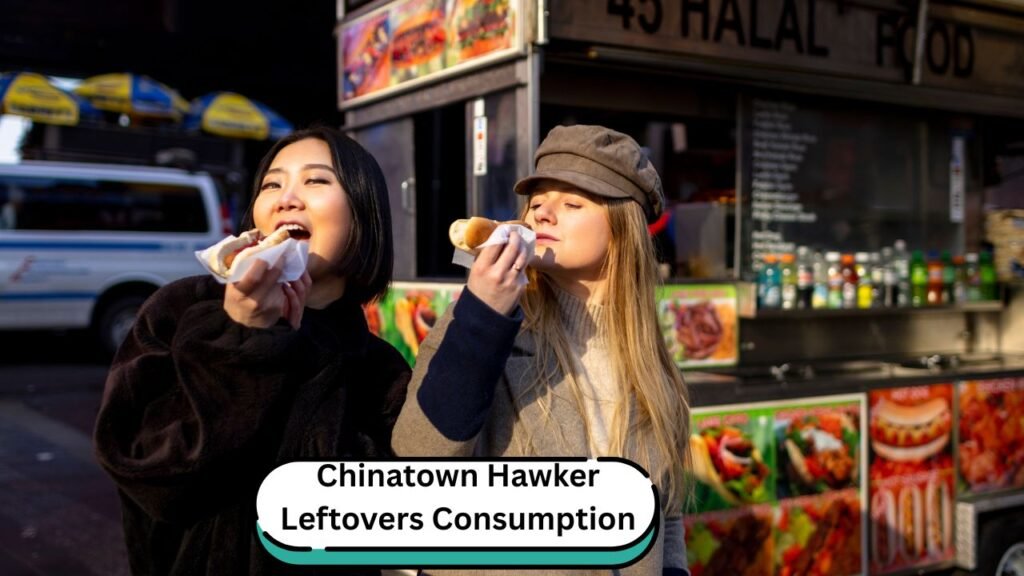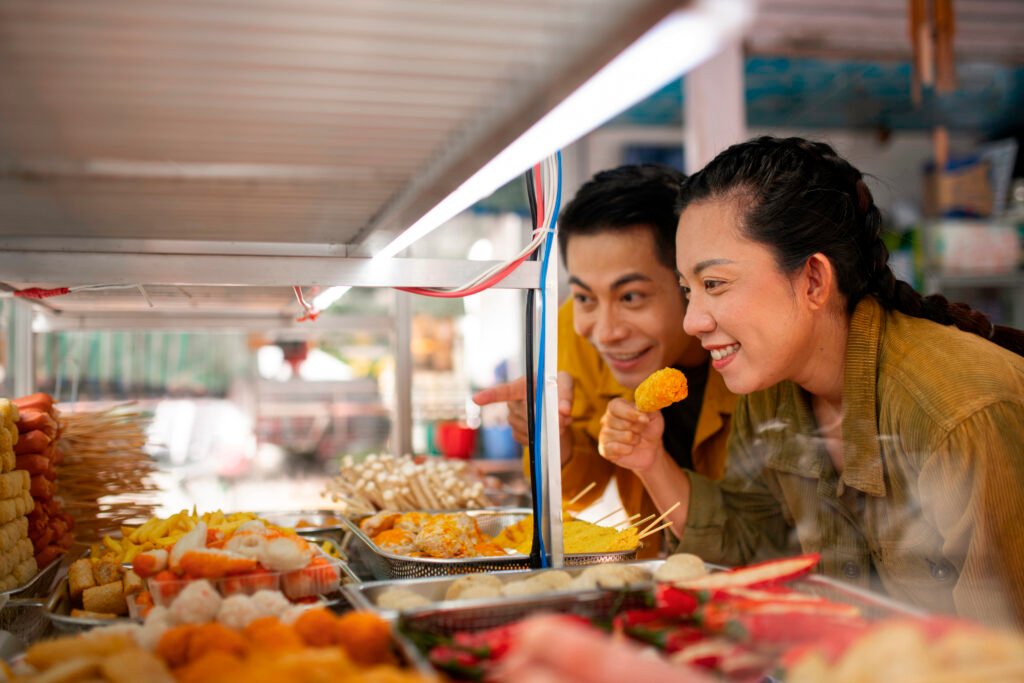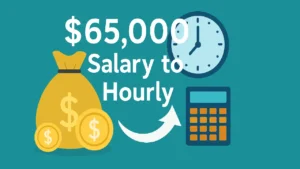
The Chinatown Hawker Leftovers Consumption is colorful, fragrant and full of flavors. Such food centers are not eating venues only, they are cultural establishments that can be decades old, with the tradition, communal spirit, and legacy of the people behind them.
Whether it is sizzling noodles or tasty dumblings, hawker stalls are a cheap and tasty food outlets of both locals and tourists.
However, behind this gastronomic liveliness, there is a hidden problem, which is usually ignored the Chinatown Hawker Leftovers Consumption. What becomes of the food unsold? What is the way to manage it? Who does consume it,–or, indeed, whether anyone does?
This blog is dedicated to the notorious and visible dish of leftovers in Chinatown hawker stalls, with the focus on consumption behaviors, sustainability, food safety, and ideas on how the rest of the society views this concept.
The Hawker Culture in Chinatown
We must first learn what the hawker culture entails before touching on Chinatown Hawker Leftovers Consumption.
The Hawker Centres Origins
The hawker center started as a state plan to deal with illegal street traders. They have today been regulated by the government to have food courts where people go to get affordable meals in a clean and social place.
Chinatown hawker facilities in such cities as Singapore, Kuala Lumpur, and Bangkok received tens of millions of vacationers consistent with the year.
A Kitchen of Melting Pot
These stalls usually offer a variety of Asian foods– Chinese, Malay, Indian and Peranakan. The meal is brief, reasonably priced, and really cultured. Due to low cost, most low-income families, students, and workers depend on such stalls on a daily basis.
But then when there is much cooking there is always wastage. This brings us to the point where our greatest question is what happens to the leftovers.
Hawker Centers volume of Food Waste
Food waste is a worldwide problem, but it acquires special connotations in the space of Chinatown Hawker Leftovers Consumption.
Numbers Game By
- Singapore by myself produces extra than 800,000 tonnes of meals waste every year as stated by using one of a kind environmental researches.
- Majority of this waste is produced by commercial food operators such as hawkers.
- When it is time to celebrate major festival periods, like a Chinese New Year or Mid-Autumn, the waste increases even more as people tend to over-prepare.
Leftover types
Hawker leftovers will fall in to three categories:
- Prepared ready- to- served (e.g. unsold fried rice)
- Perishable ingredients
- Waste plates of customers (wastes of left foods on tables)
Each of the mixes will have to be treated differently- as a waste to be disposed of, and repurposed, and given away to charity.
Regulatory Dilemma Sustainability vs. Hygiene:
Being sustainable is admirable, but hygiene of food is the main concern in nations where there are stringent health laws.
In countries such as;What Does the Law Said?
Singapore:
- The food should be either sold or discarded within a very strict time lapse, 2 4 hours after being prepared.
- The vendors are not able to re-serve or re-use leftover the next day.
- Food donations are under the criterion of HACCP.
Therefore, even the measures undertaken with good intentions and aimed at minimizing waste can come in collision with bureaucracy and health regulations.
Cost of Compliance
As a result of these limits, majority of hawkers prefer to prepare lesser quantities to reduce on the wastes, although at the expense of finishing at the end of time. The others just dump unsold food considering it as an expenditure.
This safe practice is harmful to the environment, and this is where the world has developed necessities to go green.
Inventions of Chinatown Hawker Leftovers Consumption
In spite of these, there are those hawkers and social enterprises who are innovating.
Universal Cooking in Smaller Batches
Real-time cooking and smaller batch is one of the trends. The food sold through stalls is cooked to order so that no wastage occurs instead of making big pots of soup and rice which only go to waste.
Predictive Artificial Intelligence Tools
Others are testing an AI-powered mechanism that forecasts the demand in relation to the weather, time and previous foot traffic data. This enables the hawkers to prepare their food for a day and hence limit waste.
Bio-Digesters and Composting
Others have on-site composting mechanisms that convert leftovers in fertilizer that is either sold or given to local gardens.
Food Apps that are Offers to Leftovers
New applications such as Treatsure and OLIO enable suppliers to post unwanted products at discounted rates at the end of the day. This movement of rescue food is catching on albeit not widely used by hawkers owing to its logistical issues.
Perception of Society About Chinatown Hawker Leftovers Consumption
Social stigma attached to Chinatown Hawker Leftovers Consumption can go deep, even when it is safe. Norms and Cleanliness The national culture of the United States embraces a number of norms and cleanliness is one among them.
The culture of Asian people is extremely focused on freshness and cleanliness. Although this is based on the hygiene problem, it usually creates an attitude of discouraging the use of remnants even in the comfort of the home, not to mention in the open place.
Thus, its mention of leftovers of a hawker would make people refer it to unsafe food or poverty and thus create a negative acceptance barrier.
Shifting Attitudes
happily, the 0-waste motion is helping in changing the focus. extra more youthful generations specifically millennials and Gen Z are becoming accommodating to meals sharing and sustainability though it is able to include even the usage of food this is rescued.
The mind-set can be changed further with educational campaigns, transparency and cooperation with the food influencers.

The Ethical Question: Ought We to Do Better!
Since there are still people starving and malnourished in even advanced countries, there is a moral problem of actually throwing away the food while it could just as well be eaten.
Striking Risk and Responsibility
Of course, safety of food should not be disregarded. But the question is also, what is the point:
- Is it possible to make new laws in which low risk donations could be permitted?
- Is it possible to train and certify hawkers in order to distribute leftovers?
- Can the attitudes of the population be changed so that they can favor programmed leftover consumption?
The conclusion would be that not doing anything might be no longer ethically or ecologically acceptable.
Conclusion: Chinatown Hawker Leftovers Consumption
The issue of Chinatown Hawker Leftovers Consumption is as contentious as it is important. It lies between culture, law, sustainability and social equity. Regulation is required but so is creativity, caring and open communication.
The epitome? The good (bad) news is that… Already change is in action. Using the proper tools, education and community input, we can change the paradigm of hawker centers in their approach to disposing of their leftovers, turning them not only into the epicentre of culinary hub that is Chinatown but also into an example of sustainable operation. Click here to read our blog on Shanin Blake Net Worth.






